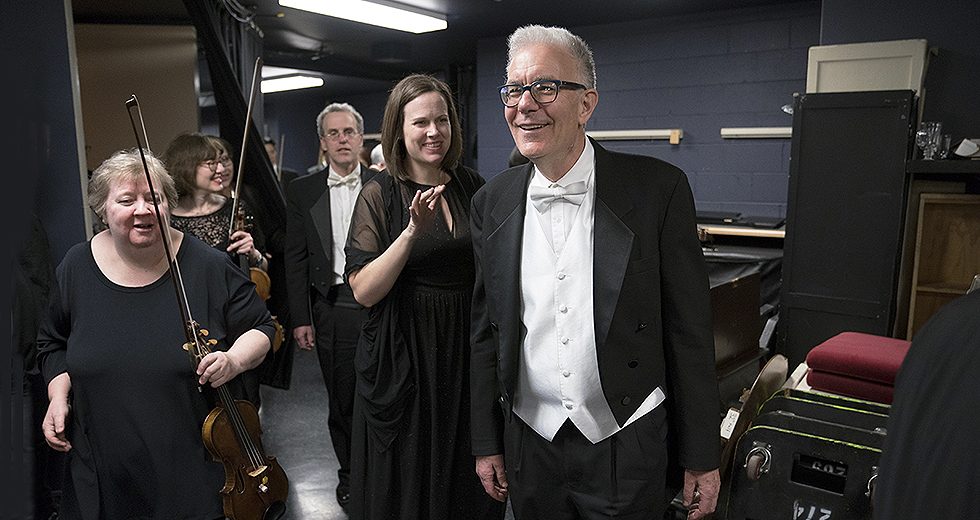
A member of the Chicago Symphony Orchestra’s viola section since 1984, Max Raimi also is a widely recognized composer and arranger, as well as an educator and essayist. In this appreciation, he comments on the contradictions of Anton Bruckner, whose Symphony No. 6 will be performed Oct. 25, 27 and 30 by the CSO, under guest conductor Bernard Haitink.
The conventional wisdom has it that it is a brutal chore to play Bruckner’s string parts, particularly the inner voices that are entrusted to the second violins and my instrument, the violas. Our parts can indeed be quite strenuous, in part because Bruckner loved the technique known as tremolo, an Italian cognate for “tremble,” in which we move our bows very quickly back and forth to sustain a single pitch.
A couple of points must be made. First, Bruckner was a virtuoso organist; he employed “tremolo” quite effectively to create an organ-like texture in his sound. When the note is sustained with tremolo, there is no beginning or end to it, as there can be when we come to the end of a single bow stroke. It creates, as an organ can, an unbroken sound, with no gaps in the musical line.
Second, all the tremolo notwithstanding, Bruckner actually writes wonderful viola parts. Bruckner was a master of counterpoint, the science of combining different melodies so that they harmonize with each other. Consequently, the violas rarely have a prosaic “accompaniment” to play; we actually have our own melody. To use Glenn Gould’s wonderful formulation, every note we play has a past and a future; it derives logically from what came before it and convincingly leads on to what follows. Our parts flow just as beautifully as the more prominent melodies and are intensely gratifying to play.
The texture Bruckner so often creates, then, is not just one melody and subservient harmonies beneath it, but a glorious tapestry with a number of melodies all blending beautifully together. Music of this nature was far more typical of composers who lived centuries before Bruckner — Renaissance masters like Palestrina and the titans of the High Baroque such as Bach. Yet Bruckner was also utterly contemporary in his use of a massive Wagner-style orchestra, his rich palette of the often ambiguous and atmospheric harmonies of his time, and the massive scale of his music, both in terms of the time frame and sheer sonic power.
Characterizations such as “contemporary” or “conservative,” “modern” or “old-fashioned,” then, are useless to describe Bruckner’s extraordinary music. The adjective that I would prefer is “timeless.” It seems to have existed for all eternity, yet manages at the same time to be completely new every time we play it.
Another contradiction: Bruckner was a very self-effacing man, deeply religious and out of his depth in a large sophisticated city such as Vienna. In his music, we sense all of his self-doubt and simplicity. Yet his symphonies, with their monumental structures and willingness to take on the most profound questions of life, death and faith, are audacious and fearless. This is perhaps what I love above all in Bruckner — the paradox of how this unassuming, intensely self-critical artist was able to tell us something about the world that is far beyond the depth of our day-to-day experience. It is an affirmation of all that is best about being human.
TOP: His fellow CSO members applaud Max Raimi after the world premiere of his Three Lisel Mueller Songs in March. | ©Todd Rosenberg Photography 2018